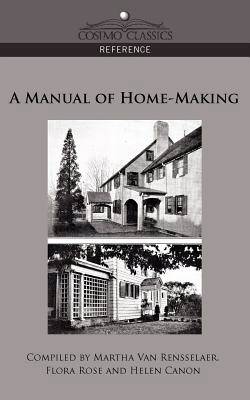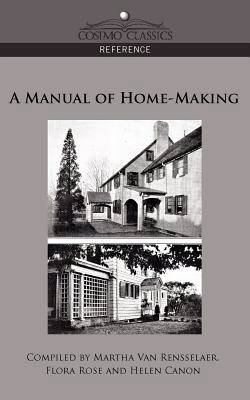
- Afhalen na 1 uur in een winkel met voorraad
- Gratis thuislevering in België vanaf € 30
- Ruim aanbod met 7 miljoen producten
- Afhalen na 1 uur in een winkel met voorraad
- Gratis thuislevering in België vanaf € 30
- Ruim aanbod met 7 miljoen producten
€ 46,45
+ 92 punten
Uitvoering
Omschrijving
The hall is the threshold of the house. It serves as an introduction. This first impression should be one of welcome and dignity and, above all, of order. Good light, genial colors on the walls and floors, a sense of free space for the passage of persons, an ample provision for the necessary wraps and umbrellas in a tidy and concealed form, are the essential characteristics of a well-considered hall, regardless of its size. -from "Home Furnishing" This classic text of home management was found in every proper household in the post World War I period, and it continues to have much to offer today. Looking at the home literally from the ground up and from the inside out, its invaluable and still timely advice includes: . choosing a sound house floor plan and exterior design . how to read gas and electric meters . protecting and storing silverware . removal of stains on a variety of soiled fabrics . proper diet for the sick . how to make pastries and yeast breads . and much more. First published in 1919, this is a fascinating peek back at American domesticity... and a reminder of how much, and how little, has changed. American editor and activist MARTHA VAN RENSSELAER (1864-1932) wrote regularly on home economics for popular women's magazines. In 1908, she and American educator FLORA ROSE (1874-1959) created the Department of Home Economics at Cornell University, which became the School of Home Economics in 1919; Rose served as deputy director for the New York State division of the United States Food Administration during World War I. They were assisted at Cornell by American educator HELEN CANON (1888-1954), who, in 1930, became the university's first head of the Department of Economics of the Household and Household Management.
Specificaties
Betrokkenen
- Auteur(s):
- Uitgeverij:
Inhoud
- Aantal bladzijden:
- 720
- Taal:
- Engels
Eigenschappen
- Productcode (EAN):
- 9781596055797
- Verschijningsdatum:
- 1/12/2005
- Uitvoering:
- Paperback
- Formaat:
- Trade paperback (VS)
- Afmetingen:
- 127 mm x 203 mm
- Gewicht:
- 771 g

Alleen bij Standaard Boekhandel
+ 92 punten op je klantenkaart van Standaard Boekhandel
Beoordelingen
We publiceren alleen reviews die voldoen aan de voorwaarden voor reviews. Bekijk onze voorwaarden voor reviews.










